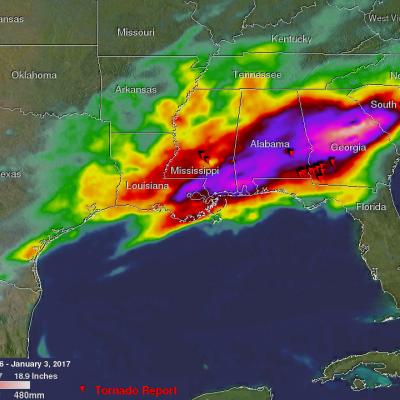Floods
Flooding Rainfall Over the U.S. East Coast Examined by GPM
Southern Texas' Flooding Rainfall Examined With IMERG
GPM Data Used to Evaluate Hawaii's Flooding Rainfall
Atmospheric River Slams California
After more than four years of drought, Californians may wonder where the current rain is coming from. Using satellites, NASA scientists have a unique view of the sources of precipitation, and how it reaches the western United States.
Deadly Tornadoes & Flooding Hits The Southeast
GPM Gets a Closer Look at Louisiana Floods
This visualization begins with an overview of the United States showing the clouds and rainfall accumulation of the massive rain event over Louisiana beginning on August 11th, 2016 through August 13th, 2016. The camera then begins to zoom in as time resets to August 11th. Time then slows way down on August 12th to show the first of GPM's passes. In this close up of GPM's volumetric DPR data over Louisiana, a cutting plane materializes into view to show the inner structure of this giant storm system.
Monsoons: Wet, Dry, Repeat
The monsoon is a seasonal rain and wind pattern that occurs over South Asia (among other places). Through NASA satellites and models we can see the monsoon patterns like never before.
Monsoon rains provide important reservoirs of water that sustain human activities like agriculture and supports the natural environment through replenishment of aquifers. However, too much rainfall routinely causes disasters in the region, including flooding of the major rivers and landslides in areas of steep topography.








